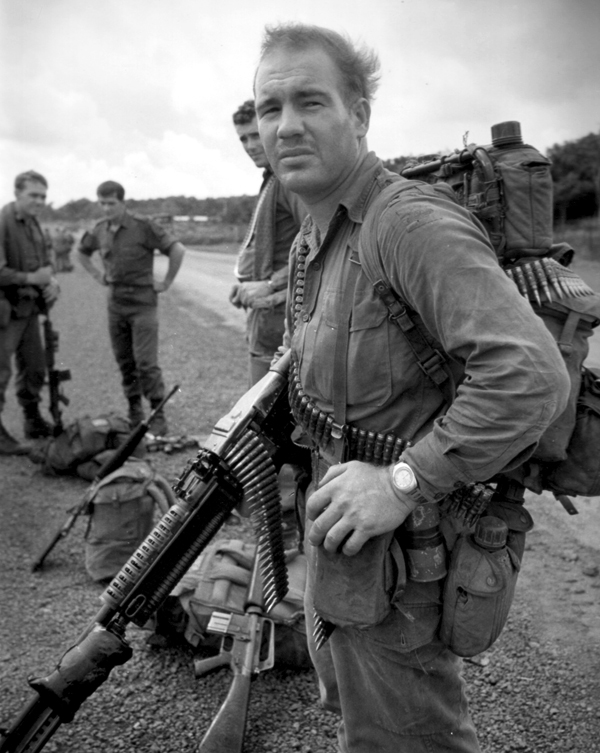Deleted member 1487
North Vietnam didn’t burn up their insurgency in Tet.
The VWP burnt (unintentionally) their main and provincial PLAF manoeuvre units. These were permanently downgraded And backfilled with northern recruits on occasion. Local PLAF forces were seriously attritted but were rebuilt internally because they were primarily security and political in nature. Almost no NFL or VWP political assets were exposed in Tet.
Claiming “the insurgency” was dealt with by 1972 is invidious. The peace treaty left significant areas under PRG control. In other areas PLAF or PAVN units were rendered inoperable or ineffective. But, as with the Australians, this is sweeping your shit under your neighbours carpet. Making claims about an insurgency being dealt with when units are stood up but inactive, OPFOR security forces are acknowledged in control of a lot of claimed territory in a peace agreement, and where OPFOR’s state formation is operational throughout your state is…deceptive.

Phoenix Program - Wikipedia
A significant number of VC were killed, and between 1969 and 1971 the program was quite successful in destroying VC infrastructure in many important areas. By 1970, communist plans repeatedly emphasized attacking the government's pacification program and specifically targeted Phoenix officials. The VC also imposed quotas. In 1970, for example, communist officials near Da Nang in northern South Vietnam instructed their assassins to "kill 1,400 persons" deemed to be government "tyrant" and to "annihilate" anyone involved with the pacification program. Several North Vietnamese officials have made statements about the effectiveness of Phoenix.[17] According to William Colby, "in the years since 1975, I have heard several references to North and South Vietnamese communists who state that, in their mind, the toughest period that they faced from 1960 to 1975 was the period from 1968 to '72 when the Phoenix Program was at work."[32] The CIA claimed that through Phoenix they were able to learn the identity and structure of the VCI in every province.[24]
....
After Phoenix Program abuses began receiving negative publicity, the program was officially shut down, although it continued under the name Plan F-6[42][43][44][45][46] with the government of South Vietnam in control.[45][44]https://en.wikipedia.org/wiki/Phoenix_Program#cite_note-48
A Retrospective on Counterinsurgency Operations — Central Intelligence Agency
A Retrospective on Counterinsurgency Operations
www.cia.gov
In 1972 CORDS reported that since the 1968 Tet Offensive, Phoenix had removed over 5,000 VCI from action, and that conventional military actions and desertions--some prompted by Phoenix--accounted for over 20,000 more. MACV claimed that Phoenix and the US military's response to the Tet Offensive, along with other rural security, and militia programs, had eliminated upwards of 80,000 VCI through defection, detention, or death.
That figure lies on the high end of estimates, all of which were dependent on statistics of varying reliability. By most accounts, however--including those of Vietnamese communists--Phoenix (which ended in 1971) and other pacification programs drove the VCI so far underground that it was unable to operate effectively. In the 1972 Easter offensive, and again in 1975, there was no sign of the VCI or the Viet Cong military because Phoenix and its allied activities had dealt them a very serious blow.
Tay Ninh Province was the terminus for the Cambodian Ho Chi Minh Trail.As early as December 1968, it was apparent to the Tay Ninh PRU that most of the senior VCI cadre had been either killed or captured in the months after Tet or had been driven into neighboring Cambodia. As a credible political threat, the VC had ceased to function in any meaningful way by the time I left Vietnam in June 1970.4
Further proof of the PRU's effectiveness came in 1975, when the communists finally defeated the South Vietnamese. The NVA commander occupying Tay Ninh Province would put in a hurried request to North Vietnam for 200 civilian political cadre. He reported that there were only six local VC cadre left in the province to manage the province's affairs.
See below too.
70% of the VC were PAVN regulars after the losses they took:The VC insurgency was still alive after Tet, but it both rallied many on the fence in South Vietnam against them and caused massive losses.
Before Tet I would have said without American troops they would have overcome South Vietnam on their own. Post-Tet they really needed a North Vietnamese invasion to overcome the state. Though they could and did continue to operate as a solid phase two insurgency which was quite a feat after their losses.

Tet Offensive - Wikipedia
According to General Tran Van Tra, 45,267 PAVN/VC troops had been killed during 1968[161] From this point forward, Hanoi was forced to fill nearly 70% of the VC's ranks with PAVN regulars.[169] PRG Justice Minister Trương Như Tảng said that the Tet Offensive had wiped out half of the VC's strength,[170] while the official Vietnamese war history notes that by 1969, very little communist-held territory ("liberated zones") existed in South Vietnam.[171] Following the Tet Offensive and subsequent U.S.-South Vietnamese "search and hold" operations in the countryside throughout the rest of 1968, the VC's recruiting base was more or less wiped out; the official Vietnamese war history later noted that "we could not maintain the level of local recruitment we had maintained in previous years. In 1969 we were only able to recruit 1,700 new soldiers in Region 5 (compared with 8,000 in 1968), and in the lowlands of Cochin China we recruited only 100 new soldiers (compared with 16,000 in 1968)."[172] As also noted by the official history, "because our armed local forces had suffered severe losses, guerrilla operations had declined."[173]
Last edited by a moderator:


